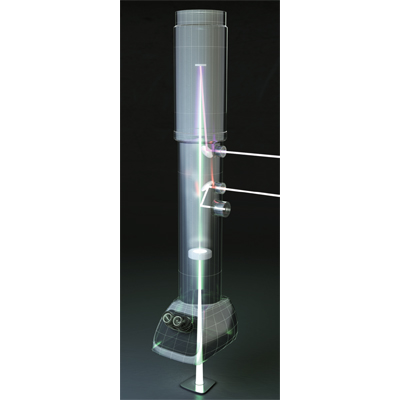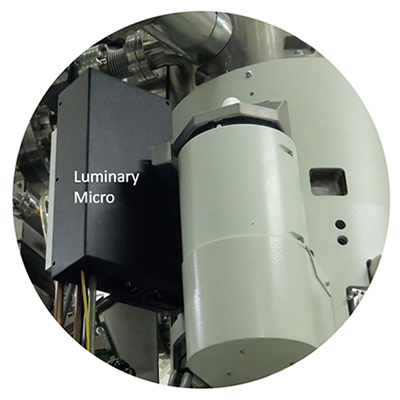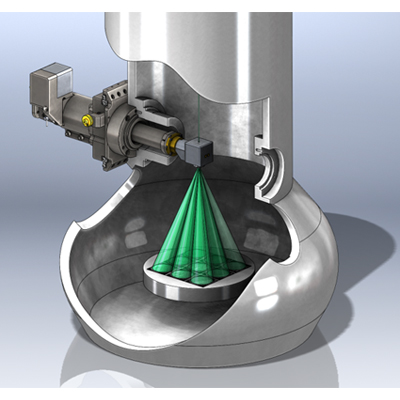EDM Basic (Electrostatic Dose Modulator)
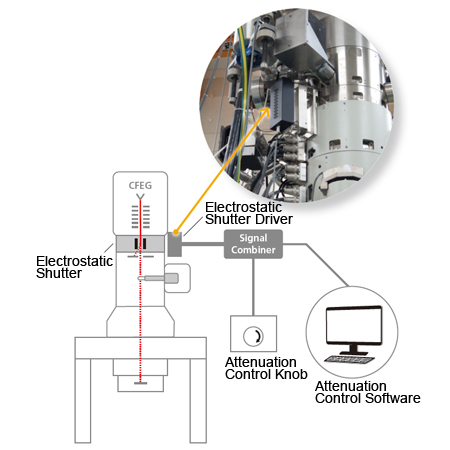
Features
Lightning-fast speeds:
EDM systems achieve switching times faster than 20 ns.Independent intensity adjustment:
By rapidly turning the beam on and off with variable pulse widths, the EDM makes it easy to adjust the average beam intensity without changing the image conditions. A desktop accessory knob provides an intuitive interface to adjust the dose attenuation factor.Dose structuring:
Users can take control of their illumination by applying dose in pulses with variable durations as short as 100 ns and frequencies up to 500 kHz.Modern control software:
The EDM works out of the box as a fast beam blanker. Control software is included for programmable dose attenuation, logging, and more.Integration:
The EDM act as a fast reliable pre-sample beam blanker while supporting a companion Relativity Sub-Framing System as well as third-party hardware.
Pulsed beam TEM illumination*
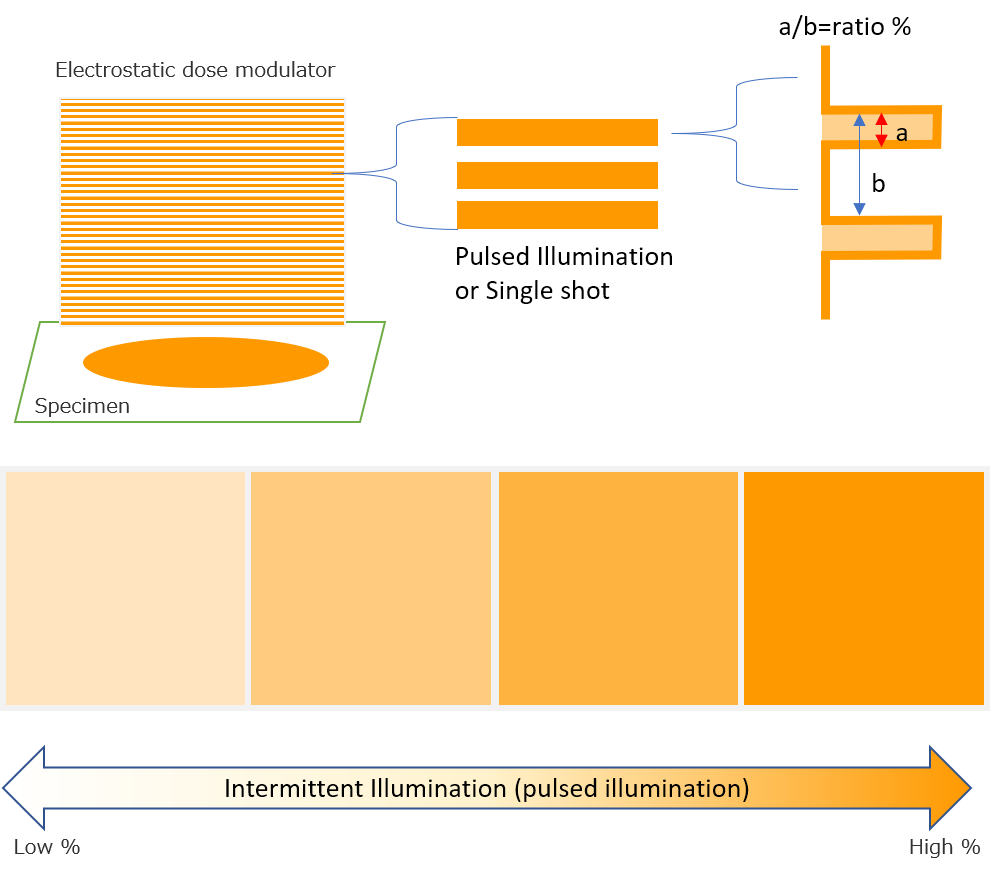
Pulsed beam STEM Illumination*
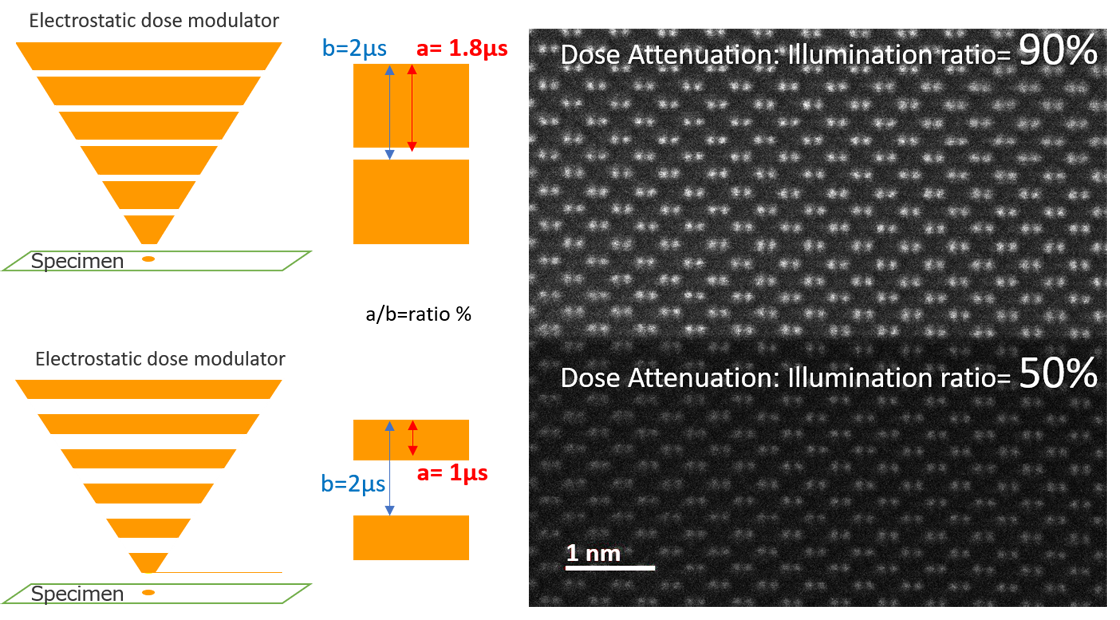
Dose attenuation by pulsed illumination with Frequency of 500 kHz (2 μs) in a high resolution STEM at 300 kV using Si[110] in the condition of pixel dwell time with 19 μs/pixel (1,024 x 1,024 pixels), by changing duration ration from 90% to 50% during acquisition of one STEM image in 20 s.
Specifications
Fast beam blanking
| Quantity | Value |
|---|---|
| Maximum pulse frequency | 500 kHz |
| Transition time 90%-10% | < 20 ns |
| Blanking signals | 3 inputs |
Dose attenuation
| Configuration | EDM Basic |
|---|---|
| Application | TEM and STEM imaging |
| Pulse repetition frequency (max) | 500 kHz |
| Pulse width increment | 62.5 ns |
| Minimum pulse width | 125 ns |
EDM option
| EDS True Area Scan | EDM Programmable Scan with EDM Synchrony |
Applicable model: JEM-ARM300F2, JEM-ARM200F (CFEG), NEOARM (CFEG), JEM-F200 (CFEG), JEM-3300, JEM-Z200FSC, JEM-Z200CA
Gallery
◆Click the "replay" button in the box above, and the movie will start (2.5 min.)◆
Time-resolved DPC imaging with EDM
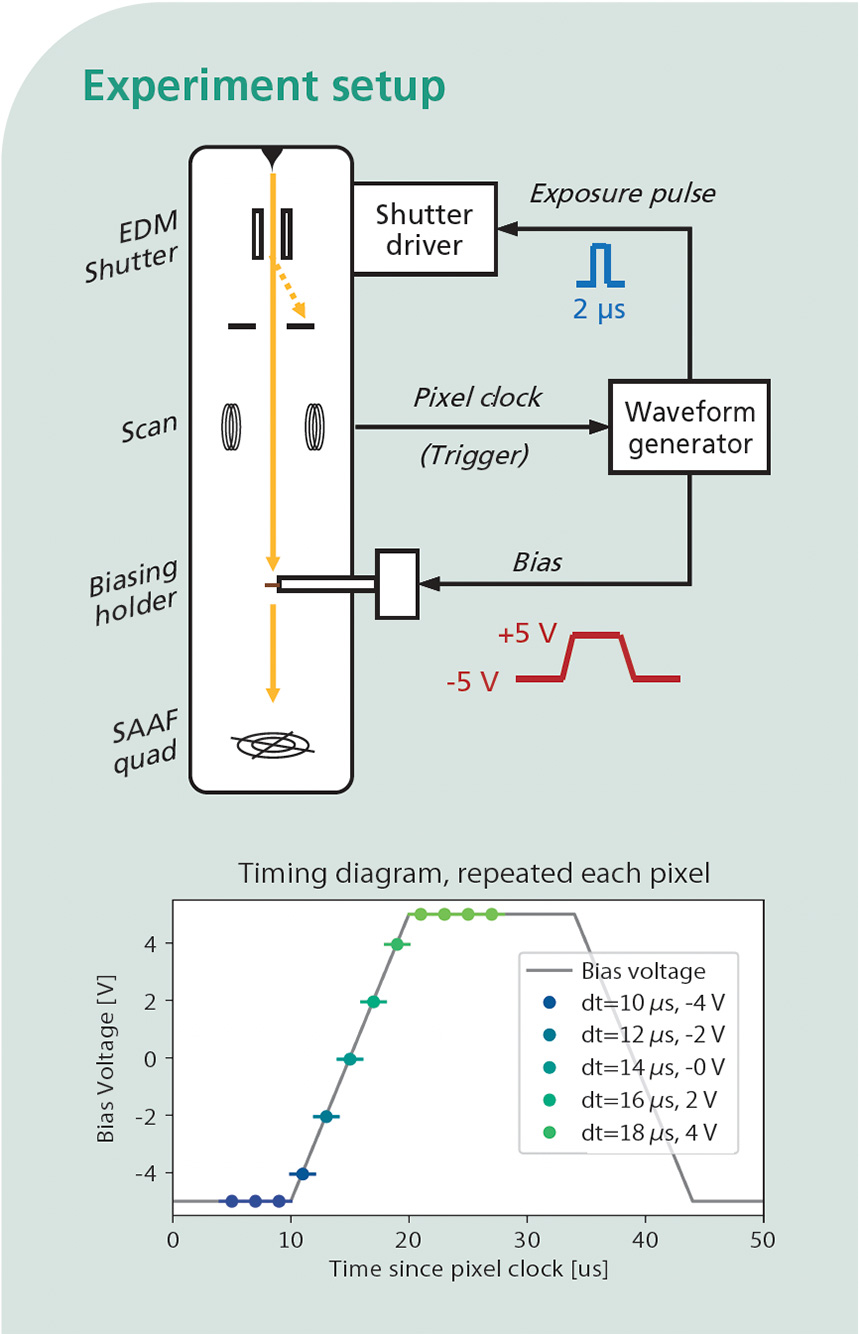
The Electrostatic Dose Modulator (EDM) makes stroboscopic measurements simple for TEM and STEM. In this application note, pulsed illumination boosts the time resolution of Differential Phase Contrast (DPC) imaging using the already-fast SAAF Quad segmented detector1. The sample2 is mounted on a chip in a biasing sample holder from Hummingbird Scientific. During each STEM pixel, a waveform generator ramps the bias voltage between -5 V and +5 V. After a variable delay time, a logic-level pulse to the input of the fast electrostatic shutter turns the probe beam on for 2 μs. Data collection can be automated.
By varying the delay time of the exposure pulse, the sample is measured at different times during the bias waveform. A complete STEM image is recorded for each delay time (shown as dots in the timing diagram to the left). Even though each STEM image takes more than 10 seconds to record, the time resolution of the measurement is set by the 2 μs exposure pulse. The sample excitation can be accomplished using in-situ holders, IDES LuminaryTM Micro, or other systems that produce repeatable dynamics in a sample.

Selected images from a tr-DPC measurement of a SiC MOS capacitor. The field in the sample is observed by the deflection of the beam at each probe position. The intensity in the top row of images shows the magnitude of this deflection, and color indicates the direction. The divergence of these indicates the charge density and is automatically calculated by the acquisition software (bottom row of images). The field is concentrated at the oxide interface between SiC (left) and Al (right). At t = 15 μs, the bias crosses zero volts and the field changes polarity.
1. Measurement conditions: Instrument JEM-F200, accelerating voltage 200 kV, STEM Lorenz mode, dwell time 50 microseconds, number of pixels 512 × 512. Experiment setup diagram is simplified. For detailed configuration information, consult your local JEOL sales office.
2. The sample is a MOS capacitor fabricated from Al, SiO2, and n-type SiC, 200 nm thick, provided by Fuji Electric Co. Ltd.
Related Products
Related Products
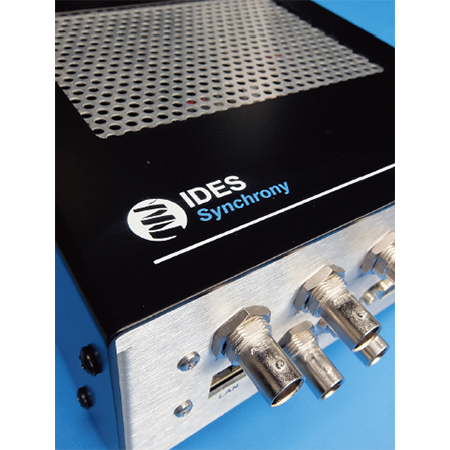
Programmable STEM with EDM Synchrony
Control the dose at every pixel.
The Electrostatic Dose Modulator (EDM) is a fast beam blanking system with a pre-sample electrostatic deflector, including electronics and software control. EDM can also attenuate electron illumination without affecting imaging conditions, giving TEM and STEM users more control over the dose on their samples.
The optional Synchrony upgrade takes EDM's timing and synchronization capabilities to the next level. Synchrony can coordinate with a STEM controller, tracking the probe beam location as it scans across the sample. EDM's lightning-fast electrostatic blanking turns the beam on for a specified time at each pixel, or keeps the beam blanked to completely exclude sensitive regions from dose.
More Info
Are you a medical professional or personnel engaged in medical care?
No
Please be reminded that these pages are not intended to provide the general public with information about the products.

